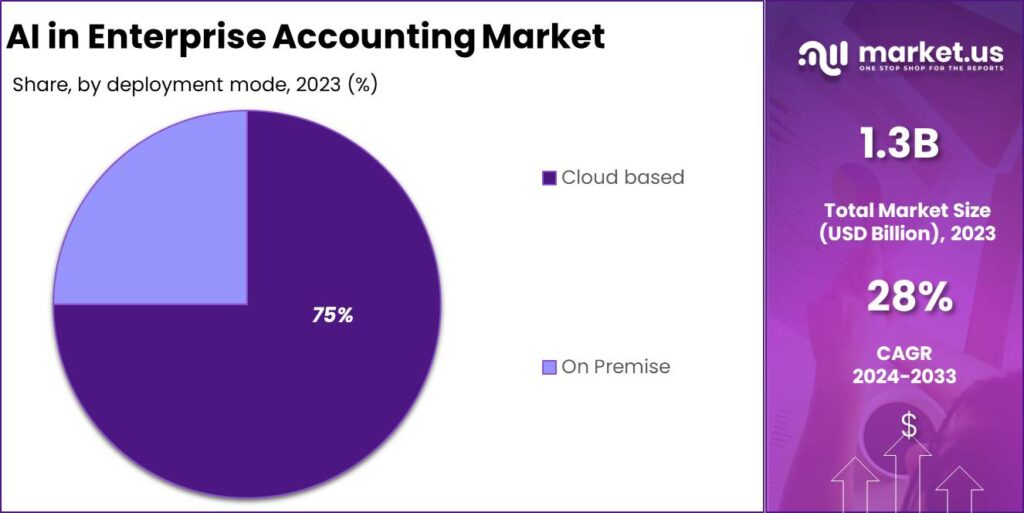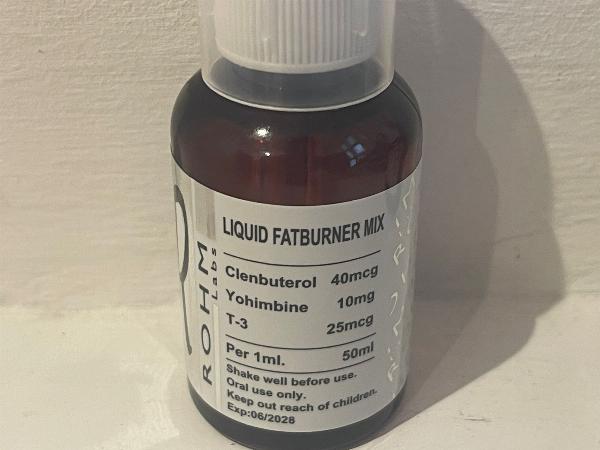How to run a social media takeover from start to finish
If you’re looking to spice up your social media marketing, try your hand at a takeover.
A social media takeover is essentially a form of influencer marketing. It’s kind of like dipping your toes into the pool but not completely committing to it. It’s often used to increase brand exposure, give some entertainment to the audience and provide interesting content. Because it has a start and end time, it can give you a taste of what a large scale influencer program might do for your company.
This article will walk you through the best steps of running a takeover. Much of the work comes before the actual takeover. The better you plan, the smoother it goes. Let's dive in.
Decide on Who’s Taking Over
There’s a whole lineup of people to choose from to operate your takeover. If you’re feeling risk-averse, start internally with an employee. Test out the waters and work out any issues before moving to outside the company.
An employee takeover is an extension of an employee feature post. In a manufacturing company, for example, an employee could go behind the scenes in their workspace and show the audience what the job is like. Instead of a regular Q&A in one post, it’d be a series of posts detailing their job. Testing the takeover out on an employee helps you refine your process.
Other people you can choose from include celebrities, influencers, customers and resell partners. The further away you get from your company in terms of familiarity, the more careful you need to be on permissions.
Once you’ve decided on your person, it’s time to move on to deciding on the actual network.
Pick the Network
Within each network, there are multiple formats that a social media takeover could look like. On Facebook, it could be on a Facebook Post or be a Facebook Live broadcast. The network you pick should reflect the audience goals you set for the takeover.
Create Your Framework
This is one of the most important parts of running a social media takeover. Your framework should be expectations around the takeover. How long will it be, how many posts will it entail and what is expected from the person taking over?
When you’re setting up expectations for the person, be sure to also include any brand do’s and don’ts. For example, what level of profanity is okay? Do you want the images to be only square or be somewhat in line with your branding so they don’t stick out in the feed?
Be careful in setting too many limitations. The point of a takeover is to have a person’s voice and maybe content speak from your brand. You don’t want their posts to read or look exactly like something your brand would write. Otherwise what's the point of doing a social media takeover in the first place?
After the framework has been created, it’s time to move on to the nitty-gritty permissions.
Set Up Your Permissions
Probably more boring than looking for fun content creators, setting up your content posting permissions is an important step in managing a takeover. Will you give them complete access to your account? Or will you give posting permissions that still need approval to post? There are many ways to approach this. Here are just a few.
1. All In: Give the Passwords
This should be done only if necessary and it’s a person you trust. In some takeover cases, like hosting it on Snapchat or Instagram Stories, you might need to give the password. Even if the content is created ahead of time, account tags on Instagram Stories still need to happen at the time of posting. If the design of those tags is important to the creator, then handing over the password reins it is.
2. Limit Posting Permissions
Facebook has several different options in their Page Roles. You can have takeover guests be moderators or if they’re on Live, assign them as a Live Contributor.
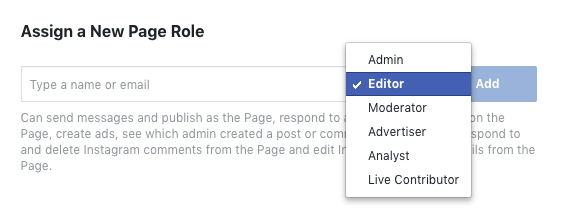
If you choose to go Live on Instagram, you could try hosting a joint Live session. No permissions need to be changed and no passwords given. Other social media networks are not as easy.
From the management platform standpoint, you can limit your posting permissions without providing passwords.
In Sprout Social, simply add a user to an account’s profile and control their access from start time to end time. If you’d rather that they not access an entire Team’s set of profiles, you can create a new team of one profile.
To ease the management of the takeover, set up some Smart Inbox filters for them. For example, if the takeover is an ask-me-anything style on Twitter, have only the Tweets with the correct hashtag show up.
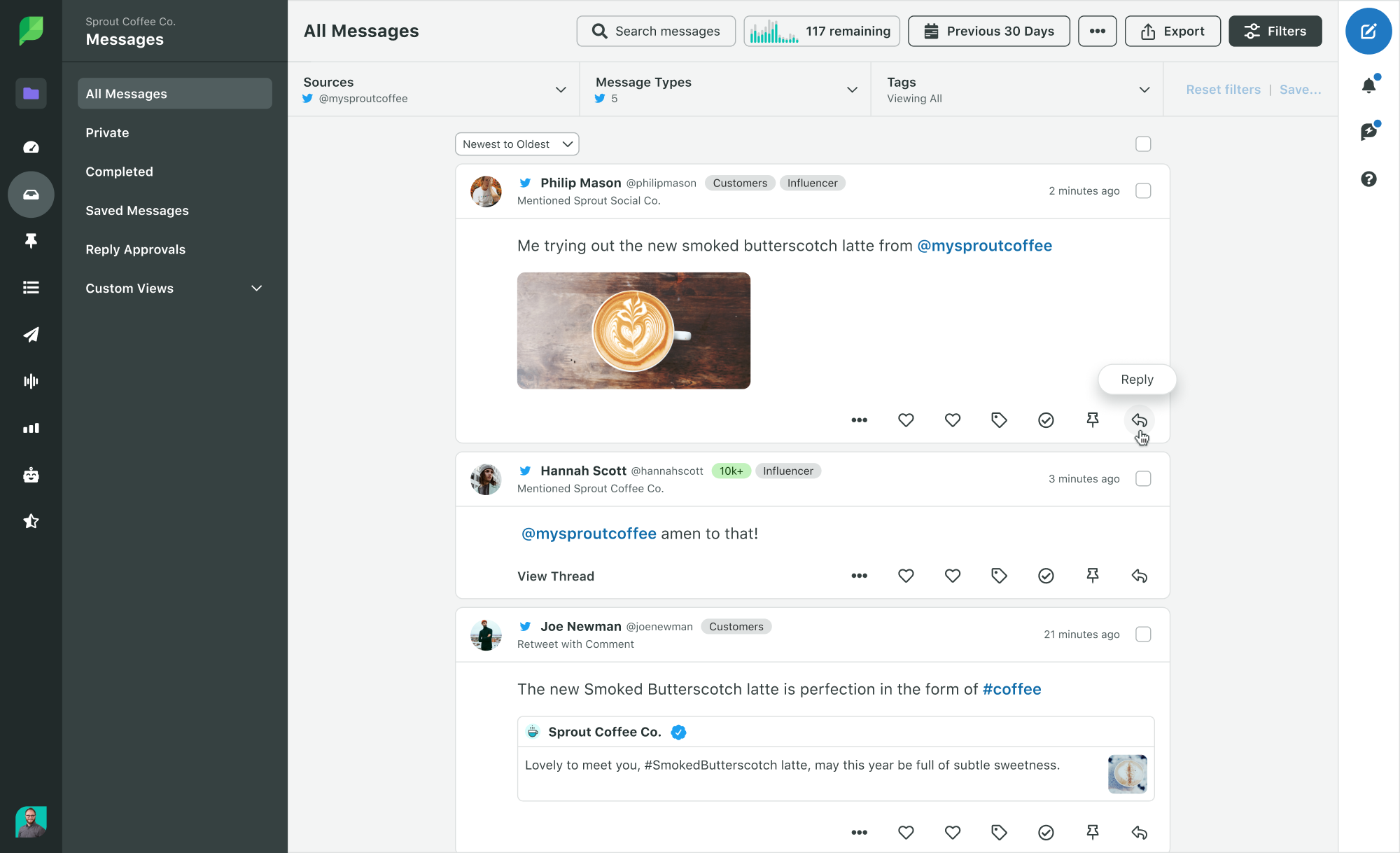
3. Add an Approval Process
Some social media management platforms (like Sprout!) have approval process options. This means that what the person posts does not automatically get sent or scheduled. Instead, the content will be queued up for approval by someone else on the social media team.
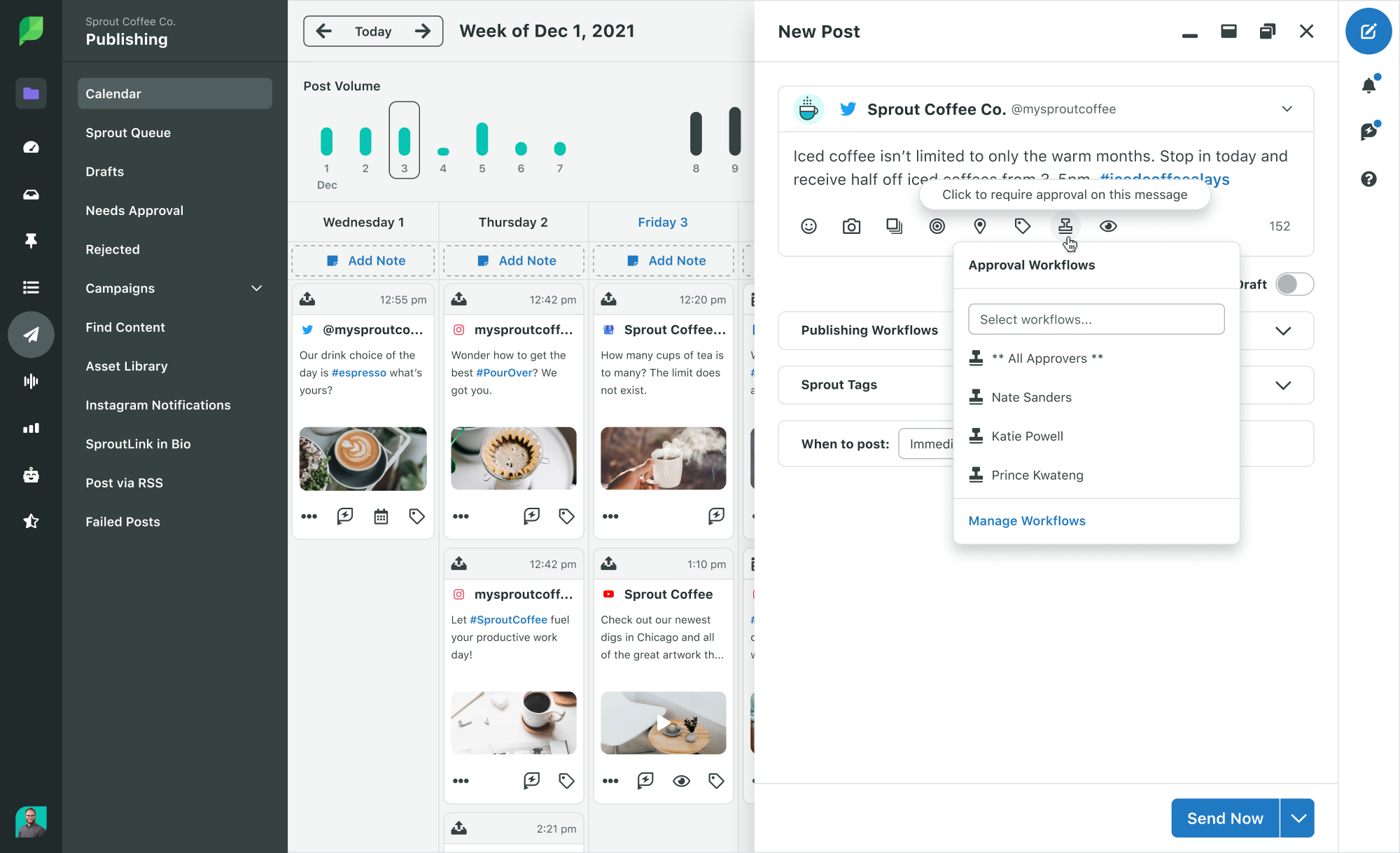
Sprout Social’s permissions features gives individual access levels to your team members. Your influencer will be a temporary member of that team.
An addition to the approval process in Sprout, the Case assignment feature is also helpful for social media takeovers. If your company receives a lot of incoming messages, it may be easier for those who are triaging the Inbox to assign and tag messages to the takeover person. This way, you can easily see later on who responded to it and which campaign it was part of.
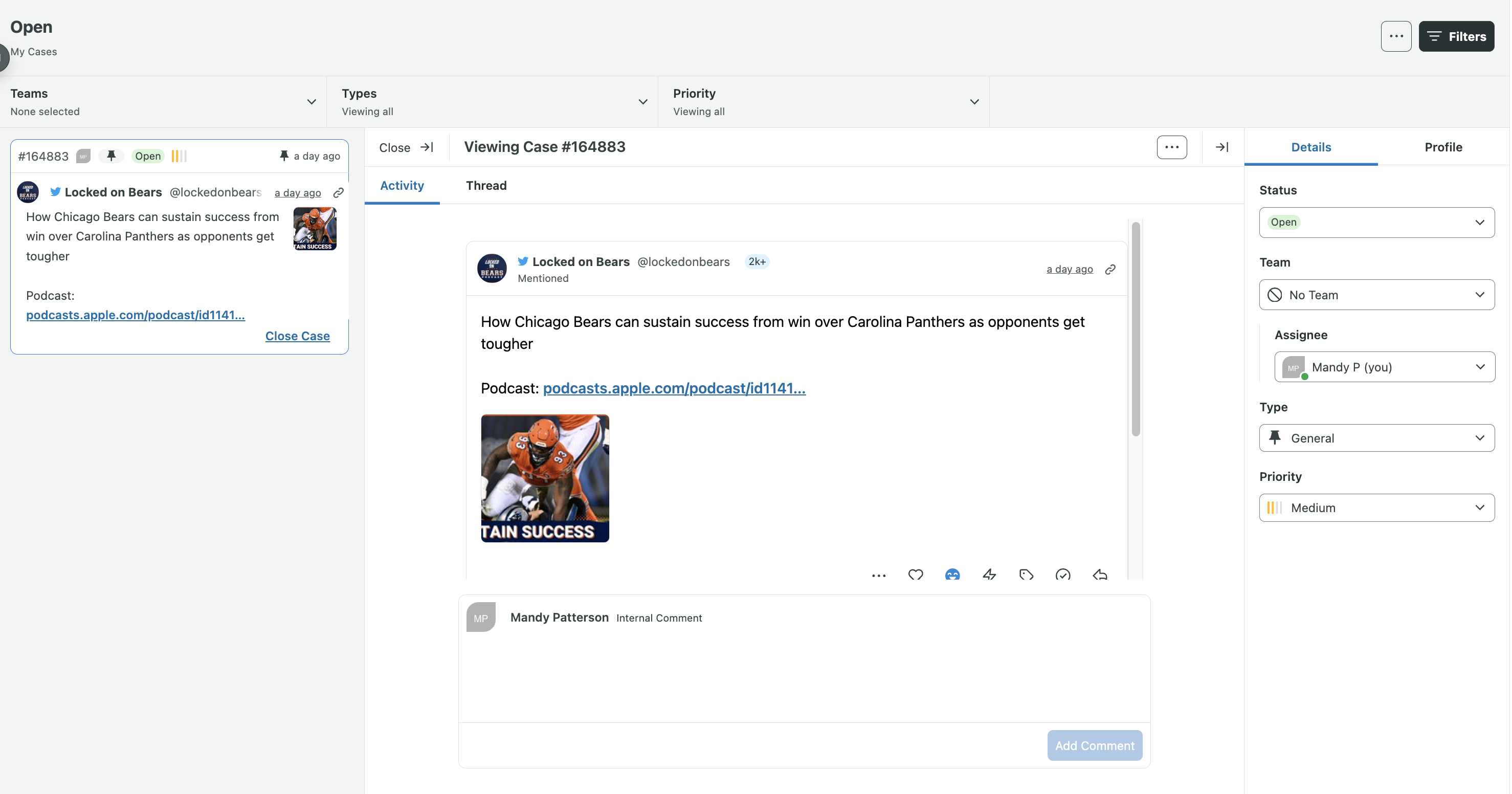
4. Hands Off: Have Content Delivered to You
This is the scenario for companies that need tighter control on their social media platforms. The content is created, the captions written and everything requires approval. You can easily receive this content through standard emails or they can be submitted through the management platform.
Again, be careful that the takeover isn’t too scripted or too similar to what you already post. You want to shake up your social media with a takeover, not see more of the same.
Align Your Goals
One thing to keep in mind while you’re envisioning your takeover is to align your goals. Your brand’s goals should match with the takeover person’s goals. It’s a two-way benefit street.
Forbes occasionally hosts a one-hour Twitter takeover with a business person using the hashtag #AskForbes. People reply to the original question and use the hashtag to engage in the conversation.
It works because the takeover benefits everyone involved. Forbes is able to continue dispensing business advice. The businessperson receives more exposure for their brand and work. And the audience has direct access to someone they might not have had before.
Ask Bastian Lehmann, cofounder of one of our Next Billion Dollar Startups, questions for the next hour https://t.co/X3CrifqRuP #AskForbes pic.twitter.com/dglnrRr5nM
— Forbes (@Forbes) October 5, 2017


